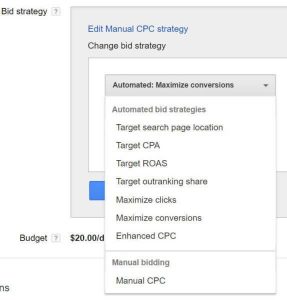The growth of your online business in Shopify significantly depends on how well you use the e-commerce platform. Unfortunately, it’s not as easy as it sounds. There’s a lot of competition in the e-commerce industry itself, and it requires patience, intentionality and transformational skills to move to the top right in the categories where you compete. Many marketers who use Shopify for eCommerce encounter strategic and tactical issues using the platform. At TopRight, we’ve studied the most common issues facing marketing executives and we provide tips and techniques to help you get the most out of Shopify. Here are a few of the most common marketing challenges you could encounter while using Shopify:
- Mediocre sales conversion
- Insufficient traffic to your site
- Difficulty interpreting Shopify analytics
- Unrealistic predictions of sales and traffic
- Misalignment of inventory management
- Failure to target and identify customers
Importance of a Clear Marketing Strategy
Your marketing strategy acts as a playbook for your business and how you make investments in you Shopify store. It helps keep your business pointed in the right direction and allows you to make informed decisions. Without a strategic marketing playbook, it’s easy to get lost and encounter obstructions. A stragegic playbook can help guide you to responding to challenges and navigating barriers you may encounter with your Shopify store. Specifically, it can help you:
- Estimate sales potential
- Promote your goods and services better
- Attract new customers
- Maintain good connection with existing customers
Tips on How to Get the Most Out of Shopify
Of course, understanding the analytics on your store isn’t sufficient to assure success. You need to turn data into insight and devise strategies to drive traffic and conversions. Here are a few tips to guide you through the development of a winning marketing strategy to get the most out of Shopify.
1. Invest in Your Own Shopify App
Most successful Shopify merchants have optimized their app to tell their brand story. A Shopify app is a powerful way to give customers a reason to care about your store and the products you offer. Your brand story also helps you build connections and engage with other prospects on other ecommerce platforms and social media sites. Making this simple investment enables you to connect, reach and engage more potential customers.
If building your own app is an obstacle, you can use tools like Pocketfied – an easy app builder that lets you conveniently manage your store. You can have your own published app within a day, even if you don’t have any design and coding skills.
2. Use Shopify Resources
Shopify offers resources to help you become a more effective marketer and entrepreneur. It provides guides, podcasts, and even an eCommerce University to learn new skills. Use these resources to learn more about the Shopify platform and get ideas on how to work on the platform more effectively and efficiently.
3. Promote Your Store on Social Media
Social media networks like Facebook, Pinterest and Twitter represent significant opportunities for you to boost brand awareness and drive traffic to your store. However, social media marketing is highly saturated – it take a lot to stand out from the crowd. Many Shopify merchants use social media to showcase their goods and services. You need to develop a good and structured approach to get an edge and drive results.
- Make a business page or account on all relevant social platforms.
- Follow accounts and market to users within your target audience.
- Integrate your shop in your accounts so shoppers can easily buy without leaving the social platform
- Post meaningful content regularly including: videos that showcase your products; special pricing promotions; new product launches; and private/ exclusive store events
4. Leverage Email Marketing
Email remains one of the best ways to connect and engage with customers. When properly used (not abused), emails can serve as the backbone of your customer conversion strategy customer conversion strategy. Here are a few tips on how to use it appropriately:
- Be creative with your emails so you can easily attract interest and give people a reason to care
- Send out cart abandonment details to remind customers about incomplete or unfinished transactions.
- Be professional and respectful – don’t send too many promotional emails. Thoughtless interruptions drive customers away.
5. Create a Website and Start Blogging
Write compelling content that will attract and encourage readers to go to your store and check out your products. Don’t just focus on your products and services. Make content about related topics and issues where you can smartly and smoothly promote your products. Think about topics that would be of interest and value to your audience. Content can be a gift if it is positioned properly with your customers.
Research what your customers care about, what they want or what unmet needs they may have. Again, don’t overload your blog with sales messages and stories about your business. Instead, focus on the relevance of your products to your customers’ lifestyles. What can you do to make them the hero of your brand story?
6. Invest in Paid Advertisements and Affiliations
Depending on your budget, be sure to set aside some money for paid advertisements. Online advertisements, clickable or not, will drive traffic to your store and boost your store’s visibility. These are usually posted on online platforms like social media sites like Facebook, Instagram, Pinterest, etc. Additionally, you can use Google Ads to get your store to appear on the top page of search results.
You can also develop affiliations with other Shopify stores and businesses so they’ll help promote your store and products. For a small percentage of a transaction, an affiliate marketer with help will drive traffic and potential customers to your store. However, remember that you’ll be sharing your revenues or paying them for their cooperation!
The Takeaway
Story, Strategy and Systems alignment can be a heavy lift when you launch a Shopify store. There are many pitfalls and issues you may encounter. But if you focus on telling a simple story, formulating a clear strategy, and leveraging Shopify best practices, you can navigate these challenges and successfully give your customers a reason to care, listen, engage and buy from your store.
Digital & Social Articles on Business 2 Community(12)
Report Post





